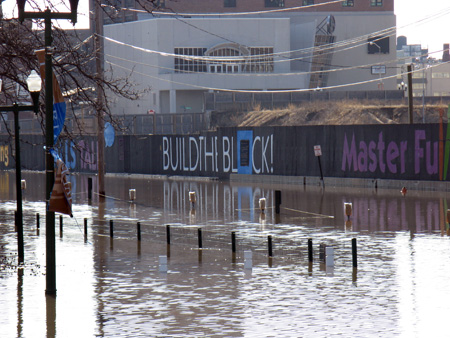Both the city and county of Peoria are facing hard times. They’re in a budget shortfall and are looking at increasing revenue and cutting costs (which means services will be cut in some way). Each entity has unwisely committed themselves to large, approximately $40 million capital outlays for non-essential projects: the city for a private Marriott hotel downtown, and the county for a private museum that has received tepid support for multiple years.
Here’s the good news: Both of these projects have missed their contractual deadlines, meaning that the municipalities could easily cancel these agreements and save taxpayers a boatload of money, both in up-front capital costs and on-going operational expenses.
Here’s the bad news: They ain’t gonna do it. Despite a history of just these types of white elephants that have contributed to the current budget mess, you can bet your heavily-taxed bottom dollar that they’re still going to go through with them, even as they cry poverty when it comes to essential city services such as police protection and road maintenance.
It seems no one in the city is able to make the connection between large, non-essential projects, and high taxes. They all hate high taxes, and they all hate service cuts, yet they continue to support large, money-losing, unnecessary projects that swallow their tax money and give them little to nothing in return.
Residents are content to believe the tortured logic of their local politicians. Here are a few of my favorites:
- “Canceling this capital project won’t do any good because the money to pay the debt can’t be reallocated to operational expenses; it can only be spent on this project.” — That’s true, but irrelevant. From the taxpayer’s perspective, canceling the project will save us money because we won’t have to support it with our tax money. It doesn’t matter that it can’t be reallocated; the municipalities are still going to have to plug their budgets with increased revenue from either taxes or fees. By canceling the agreements, that saves us from an even higher tax increase.
- “This project will pay for itself.” — Let’s look at the hotel project. The developer can’t find financing for the rest of the project (apparently banks are a little more cautious with their money than the City of Peoria — which is saying something), and the Embassy Suites expansion in East Peoria was recently scrapped because, “The hospitality business as a whole in the country is experiencing extremely hard times.” Yeah, sounds like that will pay for itself, doesn’t it? Obviously the museum will never pay for itself; even ardent supporters don’t claim that.
- “But the people voted for it.” This applies only to the museum, since the public didn’t know anything about the hotel until two days before the council voted on it, and basically had no voice in the matter. It’s not as if there isn’t precedent for the city council to ignore a vote by the people. They cut funding to the library expansion even after it was approved by a large majority of voters. This project was only narrowly approved, and mostly on the backs of Dunlap and North Peoria voters. It lost handily outside the city. I’ll bet if we had an referendum on increasing garbage fees, that would lose. Should the municipalities thus take that off the table? The fact is that any cuts in service or increases in revenue are going to be unpopular. Leadership requires that unpopular, but fiscally-responsible decisions be made in tough times.
The city and county need to cut the fat. They’re in debt. They can’t afford to provide basic services to their residents. If these developments are really the sure-fire money-makers they claim to be, let private interests finance them, not the taxpayers who are stretched already in this poor economy. Show some leadership.


 Several people have asked (rhetorically, no doubt) how the City can still be considering building a museum given the current economic climate. So I posed a few questions about that to the Museum Collaboration Group, and they graciously responded:
Several people have asked (rhetorically, no doubt) how the City can still be considering building a museum given the current economic climate. So I posed a few questions about that to the Museum Collaboration Group, and they graciously responded: